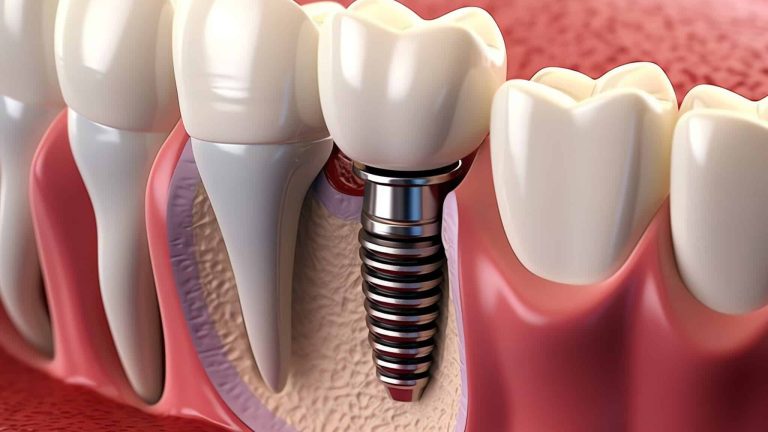In the world of modern dentistry, fixed dental prosthetics have become a widely used and reliable solution for patients who have lost one or more teeth. This treatment not only restores the functionality of the mouth, but also has a positive impact on aesthetics, self-esteem, and the quality of life of individuals. In this article, we will explore in depth what a fixed prosthesis is, its benefits, the placement process, and how it can transform the lives of those suffering from tooth loss.
1. What is a Fixed Dental Prosthesis?
The fixed dental prosthesis is a type of dental restoration used to permanently replace one or more missing teeth. Unlike removable prostheses, which the patient can take in and out as needed, fixed prostheses are permanently attached to existing teeth or dental implants using special cements or screwed directly onto implants.
There are several types of fixed prostheses, with the most common being:
- Dental Crowns: Cover a damaged or weakened individual tooth, restoring its shape, size, strength, and appearance.
- Dental Bridges: Used to replace one or more consecutive missing teeth. A bridge consists of crowns on the teeth adjacent to the gap and a false tooth that occupies the space of the missing tooth.
- Dental Implants: In combination with crowns or bridges, implants serve as artificial roots inserted into the jawbone, providing a solid foundation for the fixed prosthesis.
2. Why is it Important to Replace Missing Teeth?
Tooth loss can cause more problems than the obvious ones, such as aesthetics and difficulty chewing. Here are some key reasons why it is crucial to replace missing teeth with fixed prostheses:
- Masticatory Function: The lack of teeth can hinder proper chewing of food, affecting digestion and nutrition. A fixed prosthesis restores the ability to chew efficiently, allowing for a balanced and healthy diet.
- Prevents Tooth Shifting: When a tooth is lost, adjacent teeth tend to move toward the empty space, which can cause alignment and bite problems. This can lead to difficulties in speaking and chewing, as well as jaw pain.
- Prevents Bone Loss: The tooth root stimulates the jawbone. When a tooth is lost and not replaced, the lack of stimulation causes the bone to begin resorbing, which can affect facial structure. Fixed prostheses on dental implants prevent this bone resorption.
- Aesthetics and Confidence: A smile is one of the first things people notice in others. Tooth loss can cause insecurity and affect self-esteem. Fixed prostheses allow patients to regain a natural, beautiful smile, significantly improving their confidence.
3. Types of Fixed Dental Prostheses
Depending on the number of missing teeth and the condition of the patient’s mouth, there are several fixed prosthetic options:
- Dental Crowns: As mentioned earlier, crowns are used to restore a single damaged tooth. They can be made from various materials, such as porcelain, metal, or a combination of both. Porcelain crowns are popular for their natural appearance, as they resemble the color of natural teeth.
- Fixed Dental Bridges: This option is used when one or more consecutive teeth are missing. The false teeth are placed in the empty space and supported by crowns cemented to the natural teeth on either side of the gap.
- Fixed Prosthesis on Implants: For those who have lost several teeth or an entire dental arch, implant-supported prostheses are an ideal solution. Dental implants act as artificial roots, providing a solid foundation for a fixed prosthesis that can cover from a single tooth to the entire denture.
4. Benefits of Fixed Dental Prosthesis
Choosing a fixed prosthesis offers several benefits that go beyond simple dental restoration. Here are some of the most notable:
4.1. Improved Masticatory Function
The primary benefit of a fixed prosthesis is the ability to restore masticatory function. People who have lost one or more teeth often find it difficult to eat certain foods. A fixed prosthesis allows patients to chew effectively again, enjoying a more varied and healthy diet.
4.2. Stability and Comfort
Unlike removable prostheses, which can move or cause discomfort, fixed prostheses offer superior stability. They are permanently cemented or screwed in place, eliminating the risk of slipping or falling while the patient speaks or eats.
4.3. Natural Aesthetics
Fixed prostheses are designed to resemble natural teeth in both shape and color. This means they not only restore the functionality of the mouth but also enhance the aesthetics of the smile. Modern dental technology allows for prostheses that are virtually indistinguishable from real teeth.
4.4. Increased Self-Esteem
Losing a tooth can be an emotionally challenging experience. A smile is an important part of a person’s identity, and tooth loss can make some patients feel self-conscious. By restoring the natural appearance of the smile, a fixed prosthesis can restore confidence and improve the quality of life in terms of social and professional interactions.
4.5. Prevention of Future Problems
The lack of teeth can lead to a series of long-term problems, such as the shifting of remaining teeth, bone loss, and deterioration of facial structure. By filling the empty spaces with a fixed prosthesis, many of these problems are prevented, improving overall oral health in the long term.
5. How is a Fixed Dental Prosthesis Placed?
The process of placing a fixed prosthesis varies depending on the type of prosthesis and the specific needs of the patient. However, the most common stages in the treatment are described below:
5.1. Evaluation and Diagnosis
During the first consultation, the dentist will perform a complete evaluation of the patient’s mouth. This includes a visual examination, X-rays, and, in some cases, a CT scan to determine the condition of the bones and dental structure. Based on this evaluation, the specialist will develop a personalized treatment plan.
5.2. Preparing the Area
If it involves a crown or a bridge, the teeth adjacent to the empty space will need to be prepared to receive the prosthesis. This involves reducing the size of the teeth so that the crowns fit perfectly. In the case of implants, a small surgery will be necessary to place the implant into the jawbone.
5.3. Taking Impressions
Once the area is prepared, impressions of the teeth or implant are taken to create a customized prosthesis. These impressions are sent to a dental laboratory where the prosthesis is made.
5.4. Placement of the Prosthesis
Once the prosthesis is ready, the dentist will permanently cement it in place. In the case of implants, the prosthesis is screwed onto the dental implants once they have fully healed.
5.5. Final Adjustments
After placement, the dentist will make any necessary adjustments to ensure the prosthesis feels comfortable and functions correctly. Follow-up visits may be scheduled to ensure everything is in order.
6. Care and Maintenance of the Fixed Prosthesis
One of the greatest benefits of a fixed prosthesis is its durability. With proper care, they can last many years, even decades. However, it is important to follow a series of recommendations to ensure its longevity:
- Oral Hygiene: Brushing your teeth twice a day and flossing is essential to maintain both the fixed prosthesis and the natural teeth in good condition.
- Regular Dental Visits: It is recommended to have dental checkups at least twice a year to ensure the prosthesis is in good condition and that there are no underlying problems.
- Avoid Hard Foods: Although fixed prostheses are very resistant, it is advisable to avoid biting extremely hard foods that could damage the restoration.
Conclusion: An Investment in Your Health and Quality of Life
Fixed dental prostheses are an effective, durable, and aesthetic solution for tooth loss. They not only restore masticatory function but also improve self-esteem and prevent future oral health problems. If you have lost one or more teeth and are looking for a high-quality restoration option, a fixed prosthesis may be the best choice.



